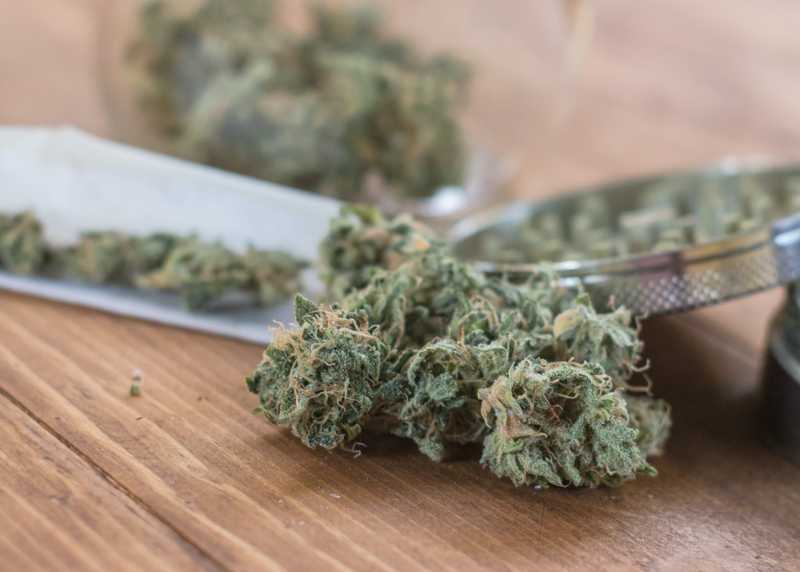Ontario has proven that size doesn’t always matter. While boasting the country’s highest population with 14.7 million people, it’s been much slower than nimble, smaller provinces in adapting to legal adult-use cannabis sales.
The Atlantic provinces greeted the new market with better thought-out cannabis retail networks than the rest of Canada. As a result, they’ve been selling much more legal cannabis per capita than the rest of the country. On Prince Edward Island, for example, marijuana sales reached $13.83 per resident in the first six weeks of legalization, compared to just $1.54 in Ontario.
RELATED: PROVINCES SCRAMBLE TO HANDLE LEGAL CANNABIS SALES
Still, the empire is prepared to strike back.
Late last year, Ontario outlined the rules for cannabis brick-and-mortar stores opening in April of this year. And last month, it announced it would run a lottery that would pave the way for 25 businesses to open the first stores—five in Toronto, two in Northern Ontario and the others in different parts of the province.
Of the strict regulations governing cannabis sales, Ontario Attorney General Caroline Mulroney said: “The purpose of these regulations is to keep kids safe and to ensure all people operating in this tightly regulated retail system behave with integrity, honesty and in the public interest . . . We will be ready with laws and regulations to protect Ontario's youth and to combat the criminal market in response to the federal government's legalization of cannabis. ”
Strict Cannabis Store Regulations Set by Ontario Government
To start, the new marijuana stores must:
- Be at least 150 metres away from schools
- Be in stand-alone locations (so no strip malls)
- Prohibit anyone under 19 from entering a store, even with an adult
- Require their employees to complete a government-approved training program in the responsible sale of cannabis
Other restrictions the province is imposing on would-be cannabis store owners and operators include:
- Denying applicants a cannabis store licence if they committed cannabis-related criminal offences in the past.
- Illegal cannabis retailers who were operating after Oct. 17, 2018, aren’t eligible for Ontario cannabis sales licences.
- The province won’t grant licences to anyone or any group with organized crime connections.
- Applicants for operator licences must demonstrate their tax compliance status to show that they’re in good standing with the government.
- In keeping with alcohol retail hours, private retail recreational cannabis stores will be permitted to open between 9 a.m. and 11 p.m. on any day.
- A market concentration limit of 75 stores per operator has been set to prevent market consolidation, promote opportunities for small businesses and to stimulate investment in the cannabis retail sector.
The Cannabis License Act creates two classes of licences for the sale of recreational cannabis:
- A retail operator licence
- A cannabis retail manager licence
Each cannabis retail store must have a separate retail store authorization, which the province will only issue to a holder of an operator licence.
Anyone who supervises or manages employees in a cannabis store, or carries out other key functions in the store, must hold a manager or an operator licence.
The Size of Canadian Cannabis Industry Is in Doubt
As Ontario gets set to enter the world of private cannabis sales—with the government acting as wholesale supplier for all of the private players—some questions are being raised as to how robust the marijuana market really is.
In the heady days immediately post-legalization, the market seemed unlimited, as Canadians spent $43 million on marijuana in the first two weeks of sales, and $54 million in the first month. This helped boost the traded value of the first players in the adult-use cannabis market and set expectations sky-high for earnings.
For example, the Chicago-based Brightfield Group, a cannabis market research firm, originally estimated that the Canadian cannabis industry would be worth $8 billion by 2021. But they recently downgraded that forecast to $5 billion, citing ongoing supply problems (which may plague the industry for years) and higher-than-expected start-up costs.
“To give you some context, in Colorado, with a population of four million, they sell about a billion dollars-worth of cannabis in a year. When the recreational market was announced here in Canada, there was so much hype and hope that the rollout was going to be strong. We didn’t see that,” says Bethany Gomez, managing director of Brightfield Group, in a Financial Post interview.
Other factors holding the domestic industry back include the lack of legal versions of popular illicit market items, such as:
- Edibles
- Vape pens
- Topical ointments
Another problem is the legal marketplace’s high price points, often 50% higher than that of illegal cannabis products.
Drinking Isn’t Diminished by Cannabis Consumption
Another interesting stat is that the provinces with the highest rate of marijuana consumption aren’t seeing any reduction in their alcohol sales. For example, Prince Edward Island’s provincial liquor stores racked up $27.9 million in sales in the last quarter of 2018, as opposed to $27.3 million in the last quarter of 2017.
From Oct. 17 to the end of 2018, Islanders spent $3.5 million on marijuana.
According to Brock University business professor Michael Armstrong, the key to cutting into alcohol sales is to bring to market a beverage with water-soluble tetrahydrocannabinol (THC), which has immediate effects. That would be in contrast to when consumers ingest the regular form of fat-soluble THC, which can take up to two or even three hours for some to feel effects.
RELATED: WHY YOUR CANNABIS EDIBLES SHOULD NEVER BE FAT-FREE
“One of the issues is getting a beverage that has some of the characteristics that people are used to with alcohol. You start drinking something alcoholic, you start getting a buzz relatively quickly,” he says in a Global News Interview.
Drinkers and marijuana consumers alike will probably say cheers to this development.
Photo credit: CAPJAH/Shutterstock.com
